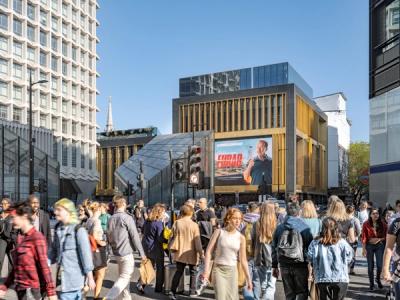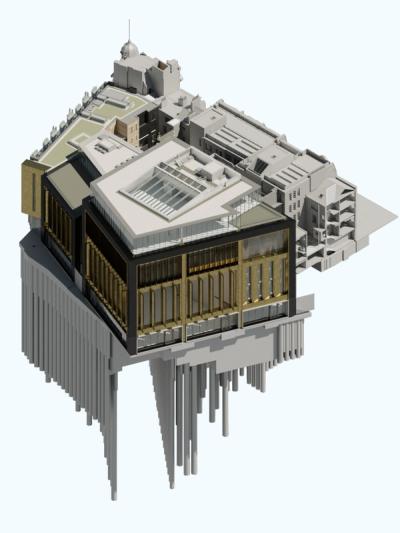The Outernet has become an internationally recognised destination for culture, creativity and inspiration in the heart of London’s West End.

With a world-first innovation brief and complex site constraints to contend with, Orms developed BIM models with the wider design team and Skanska, the main contractor, to aid costing, coordination and 4D sequencing. Key to this success was collaboration with other consultants and sub-contractors in an interactive 3D environment.
BIM was a real asset in delivering all tender and construction information. This included drawings, schedules, specifications, and quick and effective visualisations achieved by rendering BIM models directly.
Industry standard Uniclass information was provided for all model objects and to successfully share the individual models a Common Data Environment was in use throughout construction stage.
Another benefit of the BIM process was being able to take survey information during construction and quickly compare as-built conditions against the design intent BIM models. This approach identified deviations and non-conformities in 3D, allowed to spot issues early, understand potential implications and decide on the best way forward – a true real time benefit to the contractor and the client.
In an ever more complex construction environment, we actively encourage the full use of BIM to support client’s aspirations, reduce risk on site and develop digital twins to support post occupancy needs of the clients and building management teams. At The Outernet, BIM delivered multiple benefits to the client, design team and contractor.
“By the end of the project, we had 130 individual models from our supply chain and consultants. The construction team addressed vast number of issues and clashes before getting to site, enabling less risk to installation, buildability, less unnecessary hot works on site and less rework. Identifying and handling issues with an ever-growing list of models was a tricky task. BIMCollab, a cloud-based issue tracker allowed Skanska to digitally track issues, provide reports and manage issues ahead of fabrication, installation, and pre-planning. Using this tool encouraged the design team to collaboratively communicate and resolve issues before they were raised in the design team meetings, thus freeing up time for more complex issues to be discussed. Tracking and managing the design digitally is vitally important in assisting the design teams during delivery, providing early insight on technical challenges but also saving time resolving the challenges. We had good engagement from both the supply chain and consultants, which allowed for issues to be resolved in a timely manner.”
Christopher Owen, Skanska’s BIM Coordinator for The Outernet
